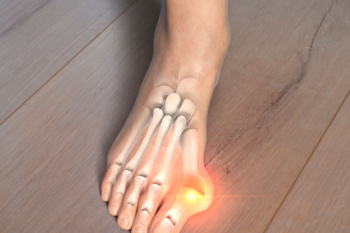A Visual Analysis of a Bunion
Tuesday, 30 July 2024 00:00
A bunion is characterized by a protrusion at the base of the big toe. It manifests as a bony bump caused by the misalignment of the joint, often leading to the big toe pushing against the adjacent toes. Bunions vary in severity, classified into degrees based on visual cues. Mild cases exhibit slight deviations of the big toe, with minimal outward protrusion. Moderate bunions display more pronounced misalignment and a visible bump. Severe bunions are marked by significant joint displacement, causing the big toe to angle drastically toward the other toes. The visual features include redness, swelling, and sometimes pain surrounding the affected area, affecting mobility and comfort. If you have developed a bunion, it is suggested that you contact a podiatrist who can offer you effective relief and treatment remedies.
If you are suffering from bunions, contact Brian D. Jackson, DPM of Neuhaus Foot and Ankle. Our doctor can provide the care you need to keep you pain-free and on your feet.
What Is a Bunion?
A bunion is formed of swollen tissue or an enlargement of boney growth, usually located at the base joint of the toe that connects to the foot. The swelling occurs due to the bones in the big toe shifting inward, which impacts the other toes of the foot. This causes the area around the base of the big toe to become inflamed and painful.
Why Do Bunions Form?
Genetics – Susceptibility to bunions are often hereditary
Stress on the feet – Poorly fitted and uncomfortable footwear that places stress on feet, such as heels, can worsen existing bunions
How Are Bunions Diagnosed?
Doctors often perform two tests – blood tests and x-rays – when trying to diagnose bunions, especially in the early stages of development. Blood tests help determine if the foot pain is being caused by something else, such as arthritis, while x-rays provide a clear picture of your bone structure to your doctor.
How Are Bunions Treated?
- Refrain from wearing heels or similar shoes that cause discomfort
- Select wider shoes that can provide more comfort and reduce pain
- Anti-inflammatory and pain management drugs
- Orthotics or foot inserts
- Surgery
If you have any questions, please feel free to contact one of our offices located in Columbia and Pulaski, TN . We offer the newest diagnostic and treatment technologies for all your foot care needs.







